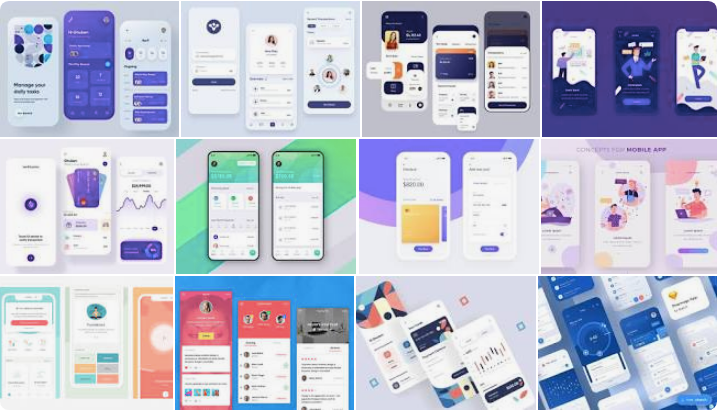Flutter MVP demo
Apply MVP to Flutter project.
To easy understand this project, you can visit my other project first which talk about ListView on Flutter at here: https://github.com/yendangn/Flutter-Simple-ListView
UI Overview
My project is using API from https://randomuser.me/ . The UI will show a list of use as below. And I also apply MVP to it.
- Android

- iOS

Project structure
- Overview

a . common
Where will contain common UI, font, color ,custom exception.
fetch_data_exception.dart
This class will extend Exception, to handle error when get data from API.
class FetchDataException implements Exception{
String _message;
FetchDataException(this._message);
String toString() {
return "Exception: $_message";
}
}
app_app_bar.dart
To custom AppBar component, we will use a lot app bar for project. So if we create a custom and re-use it, we will save a lot line of code.
class AppAppBar extends AppBar {
String _title;
AppAppBar(this._title);
@override
Color get backgroundColor => Colors.white;
@override
bool get centerTitle => true;
@override
double get elevation => 2.0;
@override
Widget get title => new Text(
_title.toUpperCase(),
style: new TextStyle(fontSize: 20.0, color: Colors.black, fontFamily: "Arquitecta"),
);
}
And when you want to use it, just do as below:
@override
Widget build(BuildContext context) {
return new Scaffold(
appBar: new AppAppBar("Users"),
);
}
Don’t need modify appbar’s attributes to custom
app_color.dart
This class will help us on convert hex color to Color object on Flutter.
class AppColor{
static Color whiteColor = const Color(0x000000);
static Color blackColor = const Color(0xFFFFFF);
}
b. feature
App’s functionality , the name will mapping with functionality. Each feature forder will have:
- Repository : will working with API or database
- Presenter : will handle app logic, get data from repository and update view.
- View : it is responsible for presenting data in a way decided by the presenter.
user_list_repository.dart
First, we will have a abstract class which will define method for Repository.
abstract class UserListRepository {
Future<List<User>> fetchUser();
}
Then, we will implement above repository by create a class, like that:
class UserListRepositoryIml implements UserListRepository {
final String _api = 'http://api.randomuser.me/?results=50';
@override
Future<List<User>> fetchUser() {
return http
.get(_api)
.then((http.Response response) {
final String jsonBody = response.body;
final int statusCode = response.statusCode;
if(statusCode != 200 || jsonBody == null){
print(response.reasonPhrase);
throw new FetchDataException("StatusCode:$statusCode, Error:${response.reasonPhrase}");
}
final JsonDecoder _decoder = new JsonDecoder();
final useListContainer = _decoder.convert(jsonBody);
final List userList = useListContainer['results'];
return userList.map((contactRaw) => new User.fromJson(contactRaw) )
.toList();
});
}
}
I’m using http https://pub.dartlang.org/packages/http#-installing-tab- to connect and get data from API. You can learn more at flutter document: https://flutter.io/cookbook/networking/fetch-data/
You can use JsonDecoder to parse Object from Json https://flutter.io/json/
user_list_presenter.dart
Define a abstract class , view will implement this.
abstract class UserListViewContract {
void onLoadUserComplete(List<User> users);
void onLoadUserError();
}
Create repository class
class UserListPresenter {
UserListViewContract _view;
UserListRepository _repository;
UserListPresenter(this._view) {
_repository = new Injector().getUserListRepository();
}
void loadUser() {
assert(_view != null && _repository != null);
_repository
.fetchUser()
.then((contacts) => _view.onLoadUserComplete(contacts))
.catchError((onError) => _view.onLoadUserError());
}
}
You can see, my repository will have UserListViewContract _view; and UserListRepository _repository;
I will init _repository on contructor by Injector ( see c. id)
UserListPresenter(this._view) {
_repository = new Injector().getUserListRepository();
}
And use _repository to get data and update view, like that:
void loadUsers() {
assert(_view != null && _repository != null);
_repository
.fetchUser()
.then((contacts) => _view.onLoadUserComplete(contacts))
.catchError((onError) => _view.onLoadUserError());
}
}
View class user_list_screen.dart ( like Activity/Fragment on Android or UIViewController on iOS).
Will implement view on above step like that
class UserListState extends State<UserListScreen>
implements UserListViewContract{
//Your code
}
Define and init presenter
UserListPresenter _userListPresenter;
@override
void initState() {
_userListPresenter = new UserListPresenter(this);
}
And use this presenter to get API:
_userListPresenter.loadUser();
Finally, handle data:
@override
void onLoadUserComplete(List<User> users) {
}
@override
void onLoadUserError() {
}
c. di
Dependency injection (just very simple level)
dependency_injection.dart
Injector class will provide the repository to presenter.
class Injector {
static final Injector _singleton = new Injector._internal();
factory Injector() {
return _singleton;
}
Injector._internal();
UserListRepository getUserListRepository() => new UserListRepositoryIml();
}
d. schema
Define data class
class User {
Name name;
Picture picture;
String email;
String phone;
User({this.name, this.picture, this.email, this.phone});
User.fromJson(Map<String, dynamic> json)
: name = new Name.fromJson(json['name']),
picture = new Picture.fromJson(json['picture']),
email = json['email'],
phone = json['phone'];
}
class Name {
String last;
String first;
Name({this.last, this.first});
Name.fromJson(Map<String, dynamic> json)
: last = json['last'],
first = json['first'];
}
class Picture {
String medium;
Picture({this.medium});
Picture.fromJson(Map<String, dynamic> json) : medium = json['medium'];
}
e. main.dart
Root of project.
Download Flutter MVP demo Source Code on GitHub
https://github.com/yendangn/Flutter-MVP-Demo
Provides the list of the opensource Flutter apps collection with GitHub repository.

